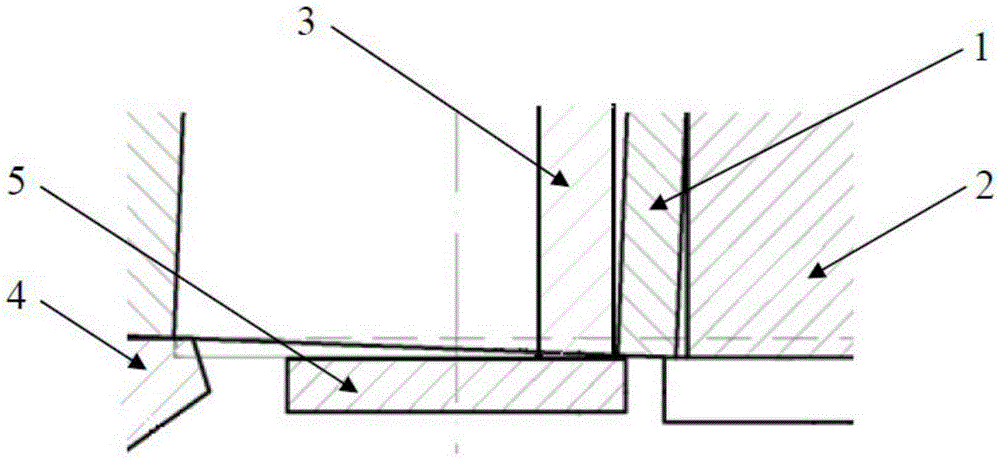Isotropic rolling method for aluminum alloy rectangular ring
A rectangular ring, isotropic technology, applied in metal rolling and other directions, can solve the problems of large difference between radial mechanical properties and axial mechanical properties, achieving consistency, and failure to guarantee the mechanical properties of rings, etc.
- Summary
- Abstract
- Description
- Claims
- Application Information
AI Technical Summary
Problems solved by technology
Method used
Image
Examples
specific Embodiment approach
[0043] The main chemical element content (percentage by weight) of the alloy is: 1.9% to 2.5% of Cu, 1.4% to 1.8% of Mg, 0.9% to 1.5% of Fe, 0.9% to 1.5% of Ni, 0.9% to 1.5% of Ni, The content of Ti is 0.02%-0.10%, the content of Mn is 0.20%, the content of Zn is 0.30%, the content of Si is 0.35%, other elements are individually ≤0.05% and the sum is ≤0.10%, and the balance is Al.
[0044] The steps of this method are as follows:
[0045] Heat the aluminum alloy bar blanked according to the specification to the forging temperature, and after upsetting, punching, and pre-rolling, it is made into a shape with a height of H 1 , thickness B 1 , the outer diameter is R 1 rectangular ring blank;
[0046] Such asfigure 1 As shown, the rectangular ring blank 1 is loaded into the ring rolling mill, the core roll 3 passes through the middle of the rectangular ring blank 1, the core roll 3 is driven and the rectangular ring blank 1 approaches the main roll 2, and then the tapered roll...
PUM
 Login to View More
Login to View More Abstract
Description
Claims
Application Information
 Login to View More
Login to View More - R&D
- Intellectual Property
- Life Sciences
- Materials
- Tech Scout
- Unparalleled Data Quality
- Higher Quality Content
- 60% Fewer Hallucinations
Browse by: Latest US Patents, China's latest patents, Technical Efficacy Thesaurus, Application Domain, Technology Topic, Popular Technical Reports.
© 2025 PatSnap. All rights reserved.Legal|Privacy policy|Modern Slavery Act Transparency Statement|Sitemap|About US| Contact US: help@patsnap.com

